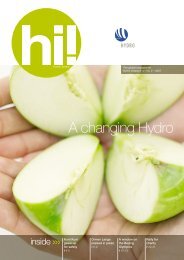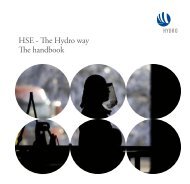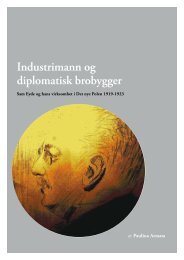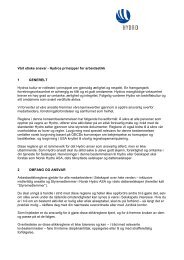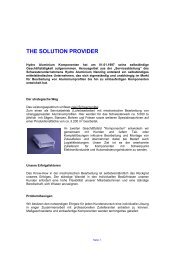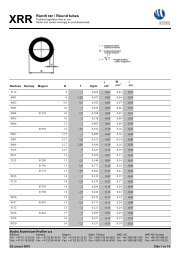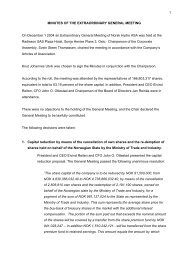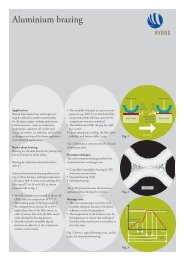Hydro Annual Report 2011b
Hydro Annual Report 2011b
Hydro Annual Report 2011b
You also want an ePaper? Increase the reach of your titles
YUMPU automatically turns print PDFs into web optimized ePapers that Google loves.
Operations<br />
<strong>Hydro</strong>’s primary aluminium plants have reduction facilities<br />
with pot lines and casthouses, where liquid and remelted aluminium<br />
is cast to form value-added products such as extrusion<br />
ingot, primary foundry alloys, sheet ingot and wire rod, in<br />
addition to standard ingot.<br />
Cost and revenue drivers<br />
The main cost drivers for the production of primary aluminium<br />
include alumina, power and carbon, which together comprise<br />
Aluminium smelting process<br />
Electrical power<br />
Wire rod<br />
Extrusion ingot<br />
Gas scrubber<br />
Sheet ingot<br />
BusIness DesCrIptIon<br />
Primary Metal<br />
31<br />
about 75 percent of the cash costs of electrolysis metal. Approximately<br />
two metric tons of alumina are required to produce one<br />
metric ton of aluminium, representing about 30 percent of the<br />
production cost of primary aluminium. 1) Energy represents on<br />
average about 25-30 percent of the operating costs. Carbon<br />
anodes consumed in the smelting process account for 15-20 percent<br />
of the total production cost of primary aluminium.<br />
Realized aluminium prices are the single most important revenue<br />
driver. Realized prices lag three-month LME prices by<br />
Primary foundry alloys<br />
Primary aluminium is produced in reduction plants where pure aluminium is formed from alumina by an electrolytic process. This process is carried out in electrolytic cells,<br />
in which the carbon cathode placed in the bottom of the cells forms the negative electrode. Anodes, which are made of carbon, are consumed during the electrolytic process<br />
when the anode reacts with the oxygen in the alumina to form CO 2 . The process requires electric energy, about 13 kWh per kilo aluminium produced in modern production lines.<br />
Silo<br />
Steel shell<br />
Cathode (carbon in base and sides)<br />
Anode (carbon)<br />
Electrolyte (960ºC)<br />
Alumina<br />
Electrolysis (potline)<br />
Liquid aluminium<br />
... is transported to casthouse<br />
Direct chill<br />
curing of<br />
aluminium<br />
ingots



